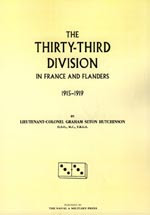
S/18321 Private John Frederick Nixon of the Rifle Brigade (but serving with the 8th London Regiment when he died), was killed in action on 3rd October 1918. He was the second eldest son of John and Elizabeth Nixon, and also my great uncle. His younger brother Walter Leonard Nixon was my grandfather.
Jack, as he was known to his friends and family, was born in Stratford (in what is now east London, but was then Essex), on 18th January 1891; one of five boys and seven girls born to John and Elizabeth. Photos of the family in the years leading up to the First World War suggest that they were a close-knit family; assembling together in various London back gardens, or larking about on Norfolk beaches during, presumably, their annual holidays. The First World War, as it did for so many families, put an end to that jollity.
Alf Nixon, youngest of the five brothers, and coincidentally also born on 18th January, but in 1897, was the first of the boys to wear khaki. He'd joined the Essex Territorials before the war, but a bicycle accident spared him from being sent overseas immediately. Brother Edgar, the oldest brother, joined the Royal Flying Corps, Walter joined the Royal Garrison Artillery, and Jack and Sid joined the Rifle Brigade.
Jack's service record survives as a burnt document in WO 363 and so we know that he attested on the 9th December 1915. Sid probably attested at the same time. He was mobilised in February 1916, but Jack wasn't called up until 2nd May 1916. Four days later he was posted to the 14th Battalion and he was with the 14th when he sailed for France on the 28th August 1916. He arrived at Havre the following day and went straight to the 47th Infantry Base Depot before being joining the 16th Rifle Brigade in the Field on the 7th September that year. The war diary for the 16th Rifle Brigade reads on this day, "Reinforcements of 419 Other Ranks received - all Derby recruits who had just arrived in this country from 14th Bn RB England."
My grandfather, as he would recall later, met Jack once - and that, by chance - at Poperinghe. My uncle, Peter Nixon, has surmised that this meeting possibly took place in the summer of 1917 but apart from this chance encounter, no evidence - anecdotal or otherwise - has come to light of any of the brothers meeting up overseas during the First World War.
Jack remained with the Rifle Brigade until the 15th August 1918 when he was posted to the 8th London Regiment (Post Office Rifles) and it was whilst he was with this battalion that he was killed in action. Jack has no known grave and his commemorated on the Vis-en-Artois Memorial in France.
Amongst his surviving papers is a small inventory which lists items returned to his mother. These were presumably found on his body and are recorded as follows:
12 Religious Cards
3 Photos
Religious Book
Letter 2 Cards
Rel Booklet
2 Divine Marks
2 Discs
The items were not dispatched until 28th February 1919 and I have wondered whether this gives some indication of a date when his body was found. The two discs are his identity discs, now amongst my most treasured possessions after they were sent to me by the daughter of one of Jack's sisters a few years ago. They'd been lying in a box of buttons for many years and both have had pink nail varnish applied to different areas of their surface; nail varnish applied, as I was told, to cover up the blood stains on them.
All of which seems to suggest that Jack probably wasn't blown to smithereens but was found on the battlefield afterwards, relieved of the possessions in his pockets - and possibly other possessions which didn't make it onto the inventory - and then presumably buried as a soldier known unto God. What should have happened was that one of his identity discs should have been removed and the other one left on the body so that it could be identified. Had that procedure been followed, Jack would have had an identifiable grave.
In any event, such detail, mused upon on a WW1 Remembrance blog 91 years to the day after he was killed, was probably of little concern to his family. His four brothers all survived the war but 1914-1918 effectively destroyed - as far as I can see - the close family unit that had existed up until then.
I have a lot of photos of the Nixon boys but until very recently, had not seen one of Jack in uniform. It was only with the death of another family member last year that a photograph of him in khaki emerged. I've posted this on my Rifle Brigade post on the Army Service Numbers blog.
The photograph on this page dates to around 1910 and shows four of the Nixon siblings in happier times. From the left, Jessie Nixon, Walter Nixon, Jack Nixon and Edgar Nixon.
At the going down of the sun, and in the morning, WE WILL REMEMBER THEM.
Sources:
Ancestry.co.uk (MIC)
Army Ancestry
Army Service Numbers 1881-1918
Commonwealth War Graves Commission
Peter Nixon who has thoroughly researched Jack and his brothers during the First World War.








No comments:
Post a Comment